Forests are the lungs of our planet, a natural reservoir of biodiversity, and a key ally in the fight against climate change. The undeniable benefits of trees have led to global initiatives like the Bonn Challenge and the Trillion Trees Campaign, which aim to restore millions of hectares of forests globally.
While planting trees seems like a straightforward solution, the reality is more complex. Irresponsible tree planting can have detrimental environmental and social consequences. For example, afforesting carbon-rich grasslands and savannas can threaten biodiversity and disrupt complex hydrological cycles. What’s more, a host of social issues arise when local communities are not properly consulted – in Cambodia, for example, reforestation initiatives have led to ‘green grabbing’.
Still, reforestation holds the largest potential to mitigate climate change out of all the nature-based climate solutions and if done right could sequester up to 17.9 billion tons of CO2e annually. Trees convert carbon dioxide into oxygen through photosynthesis, making them natural air purifiers. Moreover, forests help regulate local and global climates, stabilize soil, support biodiversity, and provide livelihoods for countless communities worldwide.
There are hundreds of organizations out there planting trees. However, at Wren we care about growing trees, not just planting them. We look for projects that use effective, science-based approaches to achieve healthy, thriving forests.
Here’s what we look for when it comes to tree-growing projects
We developed a set of criteria to vet projects after conducting extensive research into why so many tree-planting projects fail. One valuable resource was a 2022 commentary in the journal One Earth that helped us identify the key questions we should be asking and refine our vetting process. From this process, we surfaced three main categories to consider when looking for the right project to support: restoration approach, community engagement, and monitoring and transparency. Let’s explain what we mean.
Restoration Approach
Abundant research validates an approach called Forest Landscape Restoration (FLR) as best in class for people and the planet. FLR goes beyond just planting trees; it aims to restore entire forest ecosystems. This includes not only tree planting, but also restoring native vegetation, biodiversity, soil health, and water resources. It helps recreate natural habitats and ecosystems that support various species of plants and animals, helping to conserve biodiversity and restore ecosystem services by improving soil quality, reducing erosion, and enhancing water retention in landscapes. Methods tailored for each ecosystem are used and can include active planting, assisted natural regeneration or agroforestry.
While tree planting is a valuable short-term strategy for increasing tree cover, FLR focuses on long-term, sustainable forest restoration. It involves planning, monitoring, and adaptive management to ensure that restored landscapes remain healthy and functional for generations to come.
Community Engagement
Community engagement is vital for the success of tree-growing initiatives because it harnesses local knowledge, fosters a sense of ownership, and promotes sustainable practices. Communities contribute valuable insights about tree species and environmental conditions, commit to caring for planted trees, and often provide resources and labor.
Engaging communities ensures that tree planting respects cultural values, resolves potential conflicts, and distributes social and economic benefits equitably. Furthermore, it enhances monitoring and maintenance efforts, facilitates education and awareness, and ensures that tree-planting initiatives align with the needs and aspirations of the local population, making them more effective, sustainable, and harmonious.
Transparency and Monitoring
Transparency and monitoring are indispensable for the success of tree-growing initiatives because they ensure accountability, efficient resource allocation, adaptive management, and environmental impact assessment. Transparent practices hold all stakeholders accountable, preventing misuse of resources, while monitoring provides real-time data to make informed adjustments and assess the project’s environmental benefits. It fosters community engagement, builds public trust, and supports long-term sustainability by tracking tree survival and growth. Additionally, the data generated informs future projects, enhancing their effectiveness and impact.
Cost-Effectiveness
Beyond feeling confident in the work of our partners, we also consider cost. We look for organizations that are transparent in how funds are spent. While some organizations market tree planting projects for 10-15 cents per tree, we believe the true cost of growing trees is typically higher. The true cost of growing trees depends on the FLR method employed, the geography, and the ecosystem. This is why we often look at the cost of restoring a hectare as opposed to the cost of a sapling. Ultimately, we look for partners who are transparent in how funds are used so we know that our users are funding cost-effective projects.
Growing trees with WeForest
Based on the criteria outlined above, Wren researched over 20 organizations working to grow trees and restore forests. Our search led us to WeForest, an organization with a successful track record of forest and landscape restoration. WeForest takes a site-specific approach to ensure the long-term ecological health of the reforested area. They also engage in practices like Free, Prior, and Informed Consent to foster community support, minimize conflicts, and enhance project sustainability. Importantly, WeForest’s use of Geographic Information Systems (GIS) technology and third-party audits guarantees the accuracy of its claims and the effectiveness of its tree-growing efforts.
For our first initiative with WeForest, Wren is growing and nurturing trees in the Tigray region of Ethiopia. The Desa’a Forest Project aims to bring water back to the region, reverse soil erosion, and lift communities out of poverty. This award-winning project is protecting, regenerating, and planting nearly 4 million trees. In 2022 alone, over 700,00 seedlings were planted and more than 11,000 people were engaged in restoration activities.
Wren is excited to support this initiative! We love that our users can see the exact plots of land where Wren is supporting this important work. You can learn more about the project and follow along with its progress here.
The way forward
Wren looks forward to supporting WeForest, and other organizations making a meaningful difference in the fight against climate change. By learning from successful models and avoiding the pitfalls of ill-planned tree-planting projects, we can harness the power of trees to create a more sustainable and resilient future.

HQ (BE): WeForest asbl/vzw
Cantersteen 47, 1000 Brussels, Belgium
VAT number BE0826.151.968
Incorporated May 26th 2010
WeForest is a supporting member of:





| Cookie | Duration | Description |
|---|---|---|
| __cf_bm | 1 hour | This cookie, set by Cloudflare, is used to support Cloudflare Bot Management. |
| _GRECAPTCHA | 6 months | Google Recaptcha service sets this cookie to identify bots to protect the website against malicious spam attacks. |
| cookielawinfo-checbox-analytics | 11 months | This cookie is set by GDPR Cookie Consent plugin. The cookie is used to store the user consent for the cookies in the category "Analytics". |
| cookielawinfo-checbox-functional | 11 months | The cookie is set by GDPR cookie consent to record the user consent for the cookies in the category "Functional". |
| cookielawinfo-checbox-others | 11 months | This cookie is set by GDPR Cookie Consent plugin. The cookie is used to store the user consent for the cookies in the category "Other. |
| cookielawinfo-checkbox-advertisement | 1 year | Set by the GDPR Cookie Consent plugin, this cookie records the user consent for the cookies in the "Advertisement" category. |
| cookielawinfo-checkbox-necessary | 11 months | This cookie is set by GDPR Cookie Consent plugin. The cookies is used to store the user consent for the cookies in the category "Necessary". |
| cookielawinfo-checkbox-performance | 11 months | This cookie is set by GDPR Cookie Consent plugin. The cookie is used to store the user consent for the cookies in the category "Performance". |
| CookieLawInfoConsent | 1 year | CookieYes sets this cookie to record the default button state of the corresponding category and the status of CCPA. It works only in coordination with the primary cookie. |
| elementor | never | The website's WordPress theme uses this cookie. It allows the website owner to implement or change the website's content in real-time. |
| JSESSIONID | session | New Relic uses this cookie to store a session identifier so that New Relic can monitor session counts for an application. |
| Path | session | Description is currently not available. |
| viewed_cookie_policy | 11 months | The cookie is set by the GDPR Cookie Consent plugin and is used to store whether or not user has consented to the use of cookies. It does not store any personal data. |
| Cookie | Duration | Description |
|---|---|---|
| _hjAbsoluteSessionInProgress | 1 hour | Hotjar sets this cookie to detect a user's first pageview session, which is a True/False flag set by the cookie. |
| _hjIncludedInSessionSample_2773626 | 1 hour | Description is currently not available. |
| aka_debug | session | Vimeo sets this cookie which is essential for the website to play video functionality. |
| authstrategy | session | Description is currently not available. |
| li_gc | 6 months | Linkedin set this cookie for storing visitor's consent regarding using cookies for non-essential purposes. |
| lidc | 1 day | LinkedIn sets the lidc cookie to facilitate data center selection. |
| pll_language | 1 year | Polylang sets this cookie to remember the language the user selects when returning to the website and get the language information when unavailable in another way. |
| UserMatchHistory | 1 month | LinkedIn sets this cookie for LinkedIn Ads ID syncing. |
| Cookie | Duration | Description |
|---|---|---|
| SRM_B | 1 year 24 days | Used by Microsoft Advertising as a unique ID for visitors. |
| Cookie | Duration | Description |
|---|---|---|
| _ga | 1 year 1 month 4 days | Google Analytics sets this cookie to calculate visitor, session and campaign data and track site usage for the site's analytics report. The cookie stores information anonymously and assigns a randomly generated number to recognise unique visitors. |
| _ga_* | 1 year 1 month 4 days | Google Analytics sets this cookie to store and count page views. |
| _gcl_au | 3 months | Google Tag Manager sets the cookie to experiment advertisement efficiency of websites using their services. |
| _hjFirstSeen | 1 hour | Hotjar sets this cookie to identify a new user’s first session. It stores the true/false value, indicating whether it was the first time Hotjar saw this user. |
| _hjSession_* | 1 hour | Hotjar sets this cookie to ensure data from subsequent visits to the same site is attributed to the same user ID, which persists in the Hotjar User ID, which is unique to that site. |
| _hjSessionUser_* | 1 year | Hotjar sets this cookie to ensure data from subsequent visits to the same site is attributed to the same user ID, which persists in the Hotjar User ID, which is unique to that site. |
| ajs_anonymous_id | 1 year | This cookie is set by Segment to count the number of people who visit a certain site by tracking if they have visited before. |
| ajs_group_id | 1 year | This cookie is set by Segment to track visitor usage and events within the website. |
| ajs_user_id | 1 year | This cookie is set by Segment to help track visitor usage, events, target marketing, and also measure application performance and stability. |
| AnalyticsSyncHistory | 1 month | Linkedin set this cookie to store information about the time a sync took place with the lms_analytics cookie. |
| CLID | 1 year | Microsoft Clarity set this cookie to store information about how visitors interact with the website. The cookie helps to provide an analysis report. The data collection includes the number of visitors, where they visit the website, and the pages visited. |
| CONSENT | 2 years | YouTube sets this cookie via embedded YouTube videos and registers anonymous statistical data. |
| MR | 7 days | This cookie, set by Bing, is used to collect user information for analytics purposes. |
| s_vi | 2 years | An Adobe Analytics cookie that uses a unique visitor ID time/date stamp to identify a unique vistor to the website. |
| SM | session | Microsoft Clarity cookie set this cookie for synchronizing the MUID across Microsoft domains. |
| VISITOR_PRIVACY_METADATA | 6 months | Description is currently not available. |
| vuid | 1 year 1 month 4 days | Vimeo installs this cookie to collect tracking information by setting a unique ID to embed videos on the website. |
| Cookie | Duration | Description |
|---|---|---|
| ANONCHK | 10 minutes | The ANONCHK cookie, set by Bing, is used to store a user's session ID and verify ads' clicks on the Bing search engine. The cookie helps in reporting and personalization as well. |
| bcookie | 1 year | LinkedIn sets this cookie from LinkedIn share buttons and ad tags to recognize browser IDs. |
| bscookie | 1 year | LinkedIn sets this cookie to store performed actions on the website. |
| IDE | 1 year 24 days 1 minute | Google DoubleClick IDE cookies store information about how the user uses the website to present them with relevant ads according to the user profile. |
| li_sugr | 3 months | LinkedIn sets this cookie to collect user behaviour data to optimise the website and make advertisements on the website more relevant. |
| muc_ads | 1 year 1 month 4 days | Twitter sets this cookie to collect user behaviour and interaction data to optimize the website. |
| MUID | 1 year 24 days | Bing sets this cookie to recognise unique web browsers visiting Microsoft sites. This cookie is used for advertising, site analytics, and other operations. |
| personalization_id | 1 year 1 month 4 days | Twitter sets this cookie to integrate and share features for social media and also store information about how the user uses the website, for tracking and targeting. |
| test_cookie | 15 minutes | doubleclick.net sets this cookie to determine if the user's browser supports cookies. |
| VISITOR_INFO1_LIVE | 6 months | YouTube sets this cookie to measure bandwidth, determining whether the user gets the new or old player interface. |
| YSC | session | Youtube sets this cookie to track the views of embedded videos on Youtube pages. |
| yt-remote-connected-devices | never | YouTube sets this cookie to store the user's video preferences using embedded YouTube videos. |
| yt-remote-device-id | never | YouTube sets this cookie to store the user's video preferences using embedded YouTube videos. |
| yt.innertube::nextId | never | YouTube sets this cookie to register a unique ID to store data on what videos from YouTube the user has seen. |
| yt.innertube::requests | never | YouTube sets this cookie to register a unique ID to store data on what videos from YouTube the user has seen. |
| Cookie | Duration | Description |
|---|---|---|
| __tld__ | session | Description is currently not available. |
| ajscookies | 1 year | No description available. |
| ajstest | 1 year | No description available. |
| debug | never | No description available. |